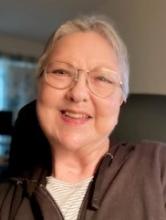
Arrhythmias and Secondary Hypercoagulable States
Activity description
This session is part of a series to guide APCs in assigning the most accurate code to support the clinical diagnosis and document patient notes to the level of specificity necessary to fully describe the patient’s severity of illness. This activity will discuss coding for multiple types of cardiac arrhythmias, as well as secondary hypercoagulable states. Mapping of these disorders in CodeGenius will be demonstrated.
Provided by
This activity is provided by Optum Health Education and Optum, Clinical Performance.
Commercial support
No commercial support was received for this activity.
Required hardware/software
Please ensure you are using the web-browser Chrome and disable any pop-up blocking software. Click here for information on how to enable pop-ups.
Target Audience
This activity is designed to meet the educational needs of physicians, PAs, nurses and nurse practitioners who self-select electronic health record (EHR) diagnosis codes and/or are interested in learning about clinical documentation improvement practices (CDIP), the concepts of ICD-10-CM coding and accurately coding clinical diagnoses.
Learning Objectives
At the end of this activity, participants should be able to:
- Describe coding parameters for different types of arrhythmias.
- Recognize documentation requirements for secondary hypercoagulable states.
- Demonstrate mapping of arrhythmias and secondary hypercoagulable state in CodeGenius.
Gayle Haas, MSEd, MSHI, RHIT, CCS, CPC-I, CPC, CRC
Sr. Coding & Documentation Integrity Educator
Coding Operations-Home and Community | Learning & Development
Risk Adjustment Center of Excellence | Optum Health
About the presenter
Gayle Haas, MSEd, MSHI, RHIT, CCS, CPC-Instructor, CPC, CRC is an Optum Senior Instructional Designer/Senior Documentation and Coding Integrity Educator for Home and Community Coding Operations, Learning and Development team. Gayle has a Master’s degree in Education: Instructional design for online learner’s and a Master’s degree in Health Information Technology. She has 26 years’ experience as an ICD-10 Coding Educator and holds credentials with the following designations: Registered health information technician (RHIT); Certified coding specialist (CCS); Certified coding professional (CPC), Certified coding profession-instructor (CPC-I) and Certified risk adjustment coder (CRC). Gayle is also an adjunct professor at Bryant & Stratton College online. Gayle enjoys helping others understand how to code using ICD-10 and to understand the how’s and why’s behind the codes. Outside of work her interests are genealogy, crafts, and sightseeing Florida! Gayle’s family consist of two daughters, one son-in-law who calls her “mom” and a grandson who is almost two. Also, her family includes a much-loved dog who is a Whippet and Rat Terrier mix called Bunny. (He’s all ears!)
Activity planners
Elizabeth Albert, MD
Clinical Activity Manager
OptumHealth Education
Chelly Hartge, LPN, RHIA, CCS, CRC, CCDS-O
Associate Director Learning & Development
Coding Operations-Home and Community
Risk Adjustment Center of Excellence | Optum Health
Disclosures of relevant financial relationships
In accordance with the Accreditation Council for Continuing Medical Education's (ACCME) Standards for Integrity and Independence in Accredited Continuing Education, Optum Health Education (OHE) requires all those in control of educational content to disclose their financial relationships with ineligible companies within the prior 24 months. Ineligible companies are defined by the ACCME as companies whose primary business is producing, marketing, selling, re-selling, or distributing health care products used by or on patients. Individuals must disclose all financial relationships, regardless of the amount, with ineligible companies and regardless of their view of the relevance of the relationship to the education. OHE ensures that the content is independent of commercial bias.
The activity faculty and planners have no financial relationships to disclose.
Method for calculating CE credit
CE credit was calculated by the complexity of content.
Accreditation statement In support of improving patient care, this activity has been planned and implemented by Optum Health Education and Optum, Clinical Performance. Optum Health Education is jointly accredited by the Accreditation Council for Continuing Medical Education (ACCME), the Accreditation Council for Pharmacy Education (ACPE) and the American Nurses Credentialing Center (ANCC), to provide continuing education for the health care team.
In support of improving patient care, this activity has been planned and implemented by Optum Health Education and Optum, Clinical Performance. Optum Health Education is jointly accredited by the Accreditation Council for Continuing Medical Education (ACCME), the Accreditation Council for Pharmacy Education (ACPE) and the American Nurses Credentialing Center (ANCC), to provide continuing education for the health care team.
Credit designation statements
Nurses
The participant will be awarded up to .50 contact hour(s) of credit for attendance and completion of supplemental materials.
Nurse practitioners
The American Academy of Nurse Practitioners Certification Program (AANPCP) accepts credit from organizations accredited by the ACCME and ANCC.
Physicians
Optum Health Education designates this enduring activity for a maximum of .50 AMA PRA Category 1 Credit(s)™. Physicians should claim only the credit commensurate with the extent of their participation in the activity.
PAs
The American Academy of Physician Assistants (AAPA) accepts credit from organizations accredited by the ACCME.
Attendance
A certificate of attendance will be provided to learners upon completion of activity requirements, enabling participants to register with licensing boards or associations that have not been preapproved for credits. To apply for credit types not listed above, participants should use the procedure established by the specific organization from which they wish to obtain credit.
Available Credit
- 0.50 AMA - Physicians
- 0.50 ANCC - Nurses
- 0.50 Attendance - General Attendance
You must be logged into your account to participate in this activity. Get started by clicking “Register/Continue” and following the instructions. At the end of the activity, you will be able to view, save or print your certificate of participation. A complete listing of all of your activities can be found under “My Account,” “My Activities.”

 Facebook
Facebook Twitter
Twitter LinkedIn
LinkedIn Forward
Forward